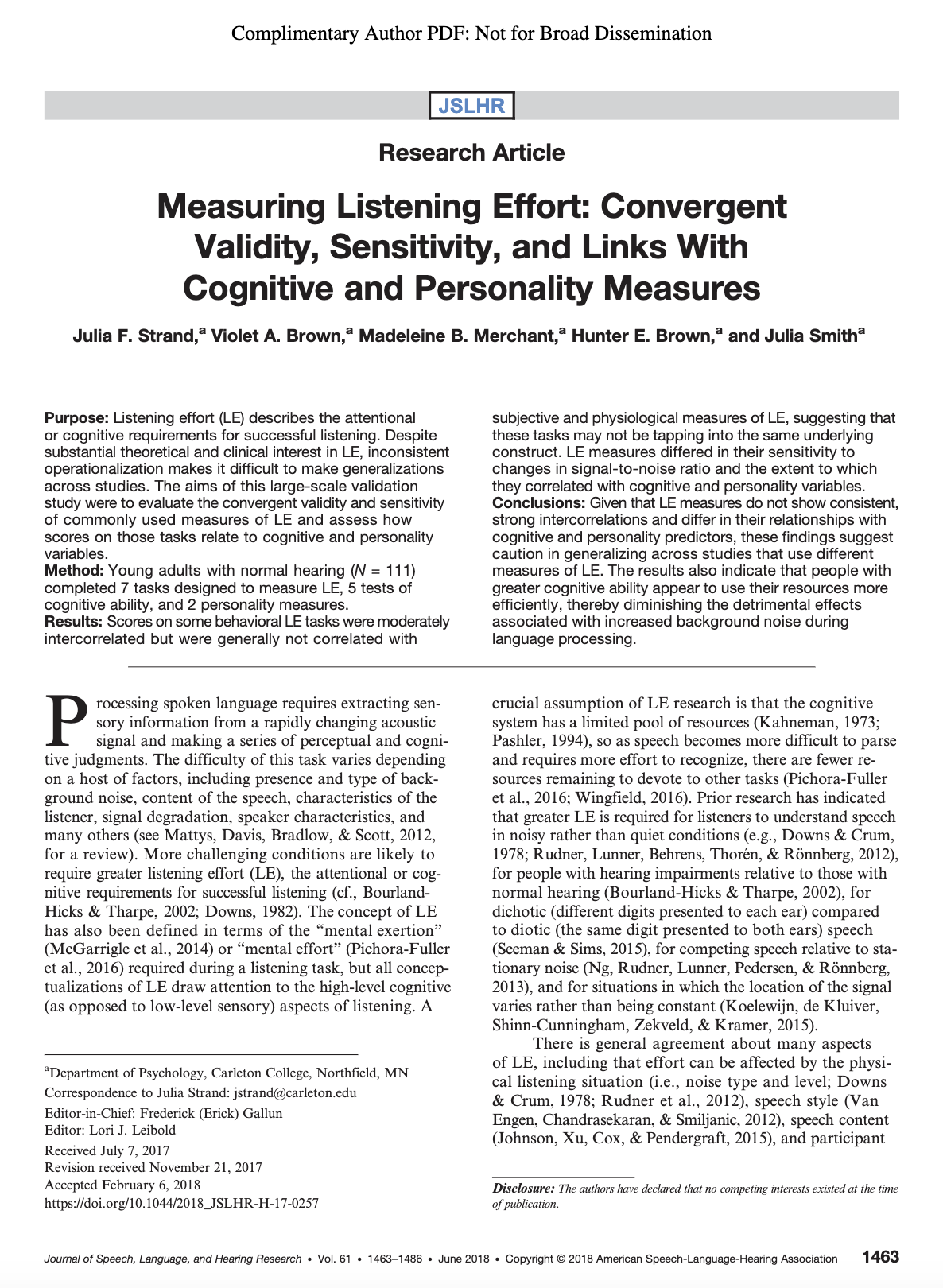
Measuring Listening Effort: Convergent Validity, Sensitivity, and Links With Cognitive and Personality Measures
Purpose: Listening effort (LE) describes the attentional or cognitive requirements for successful listening. Despite substantial theoretical and clinical interest in LE, inconsistent operationalization makes it difficult to make generalizations across studies. The aims of this large-scale validation study were to evaluate the convergent validity and sensitivity of commonly used measures of LE and assess how scores on those tasks relate to cognitive and personality variables. Method: Young adults with normal hearing (N = 111) completed 7 tasks designed to measure LE, 5 tests of cognitive ability, and 2 personality measures. Results: Scores on some behavioral LE tasks were moderately intercorrelated but were generally not correlated with subjective and physiological measures of LE, suggesting that these tasks may not be tapping into the same underlying construct. LE measures differed in their sensitivity to changes in signal-to-noise ratio and the extent to which they correlated with cognitive and personality variables. Conclusions: Given that LE measures do not show consistent, strong intercorrelations and differ in their relationships with cognitive and personality predictors, these findings suggest caution in generalizing across studies that use different measures of LE. The results also indicate that people with greater cognitive ability appear to use their resources more efficiently, thereby diminishing the detrimental effects associated with increased background noise during language processing.
